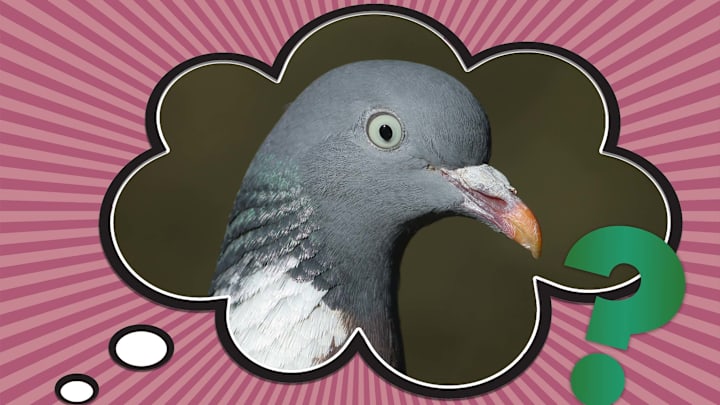To the layperson, the difference between pigeons and doves has something to do with color—maybe. Or location. Or general appeal (doves usually get much better press than pigeons do). But what’s the actual scientific difference between doves and pigeons?
As it turns out, there isn’t one. Paul Sweet, the collection manager for the department of ornithology at the American Museum of Natural History, said the difference is more linguistic than taxonomic.
“The word dove is a word that came into English from the more Nordic languages, whereas pigeon came into English from French,” Sweet told Mental Floss in 2018.
Both dove and pigeon refer to the 300-plus species of birds in the Columbidae family, Sweet said. There’s no difference between a pigeon and a dove in scientific nomenclature, but colloquial English tends to categorize them by size. Something called a dove is generally smaller than something called a pigeon, but that’s not always the case. A common pigeon, for example, is called both a rock dove and a rock pigeon.
More Articles About Pigeons:
“People just have their own classification for what makes them different,” Sweet said. “So in the Pacific, for example, the big ones might get called pigeons and the smaller ones might be called doves, but they’re actually more closely related to each other than they are to other things in, say, South America, that are called pigeons and doves.”
The difference boils down to linguistic traditions, so feel free to tell people you’re releasing pigeons on your wedding or that you’re feeding doves in the park. Scientifically speaking, you’ll be correct either way.
Have you got a Big Question you’d like us to answer? If so, let us know by emailing us at bigquestions@mentalfloss.com.
A version of this story ran in 2018; it has been updated for 2024.
